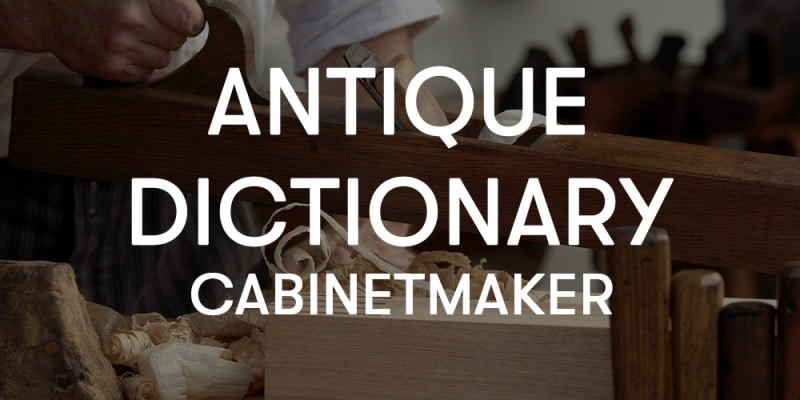
Today’s word is: cabinetmaker. We will try to explain the type of work and its history. Finally, as usual, a little curiosity about the cabinetmaker.
Who is the cabinetmaker?
The term “cabinetmaker” literally defines a craftsman specialized in the processing of ebony. It was first adopted in France in the seventeenth century. It was used to qualify the veneer of precious woods.

Care must be taken not to confuse the cabinetmaker with the carpenter, who in French is called “menuisier“. This, in fact, was only responsible for making the frame of the furniture by working solid wood. The cabinetmaker, on the other hand, had the task of finishing the furniture giving the imprint that characterizes it.
When was the profession of cabinetmaker born?
The birth of the figure of the cabinetmaker is not well defined. It is thought that it was introduced in France of the Netherlands in the early seventeenth century by the carpenter Jean Macè but, in official documents the word appeared for the first time only in 1657.
Guild of cabinetmakers
The figure of the cabinetmaker had a great evolution in France. This diffusion can be explained by the creation of the special Parisian Corporation of menuisiers-ébénistes .
The title of maitre d’ was also instituted. To obtain it, it was necessary to take an examination at the jury of the aforementioned Corporation. The test consisted in presenting to the commission one’s own work which was judged. Depending on the quality of this one obtained the qualification or not.
Rules of the Corporation
During the reign of Louis XV a way was thought of to protect the profession of cabinetmaker; The maitres-ébénistes were recommended to sign their works to defend their qualification as masters. From 1751 until the year of the suppression of the Guild, 1791, therewas an obligation to impress the name of the cabinetmaker on the furniture.
It didn’t end there. To protect the title of cabinetmaker obtained through the appropriate examination by those who only tried to make copies, the obligation for cabinetmakers to apply a control punch on their creations was also added.
The only exception was that of cabinetmakers employed by the king. They, in fact, did not have to submit to these obligations. The guild also enforced a law in favor of the widows of cabinetmakers; They were allowed to use her husband’s estampille in works of his workshop, which they continued.
The corporation was very demanding on compliance with the rules. He took great care that each profession performed its own work exclusively. Painting and gilding were the responsibility of the peintres-doreurs and vernisseurs. The bronzes applied on the furniture were reserved for sculpteurs.

They were very strict rules. Those who did not respect them underwent a real trial. For example, cabinetmaker Cressent faced more than one trial for opposing the guild of artisan founders and engravers. As a result, he suffered heavy fines that three times led to his failure.
In Italy
The figure of the cabinetmaker, in Italy, was never well defined. The distinction between ébéniste and menuisier has never been found.
The reason is that they have never looked for more figures for processing. A single craftsman or, at most, his subordinates carried out all the executive phases of the production of the furniture.
The cabinetmaker in our gallery
In our gallery you can find a lot of cabinetmakers’ furniture. Today we decided to show you this tip .

It is a cabinet in ebonized wood. On the front it has four drawers bordered by a guilloche frame and adorned with ivory panels engraved with burin. Ivory inlays are also present on the front feet and between the drawers.


Not only cabinetmakers
The maitres-ébéniste, in addition to veneer and inlay work, specialized in a new technique: equipping furniture with special mechanical devices .
The most famous cabinetmakers exponents of this new technique were: P. The Migeon, J.F. Oeben, J.H. Riesener in collaboration with Merklein. They developed particular models:
- Transformation
- Secrets
- surprise
Who is the cabinetmaker today?
As you may have understood, the term “cabinet-making” in antiquity was used to designate a refined processing of precious woods.
Today, however, it is used to generically indicate the art of working with wood and sometimes even the cabinet-making workshop.
To discover all the other works of famous cabinetmakers you can visit our shop and our warehouses (also online!). We are waiting for you!







